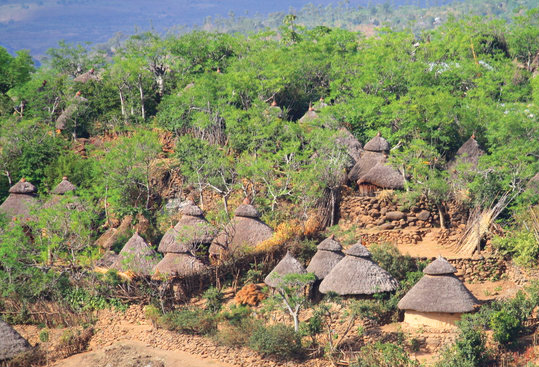Explore Ethiopia's unique UNESCO World Heritage Sites
Ethiopia has nine UNESCO World Heritage Sites and we can take you to all of them. No African country has more United Nations Educational, Scientific and Cultural Organization (UNESCO) sites than Ethiopia. UNESCO recognizes and protects sites of globally significant, cultural or natural heritage value. In Ethiopia, 8 are cultural and one is natural - the Simien Mountains National Park.
Ethiopian Adventure Tours will take you to 7 of these incredible locations on our 16-day Wildlife and History tour - Konso Cultural Landscape and the Lower Valley of the Omo River are the two southern sites that are visited as part of the 7-day Lower Omo River valley tour.
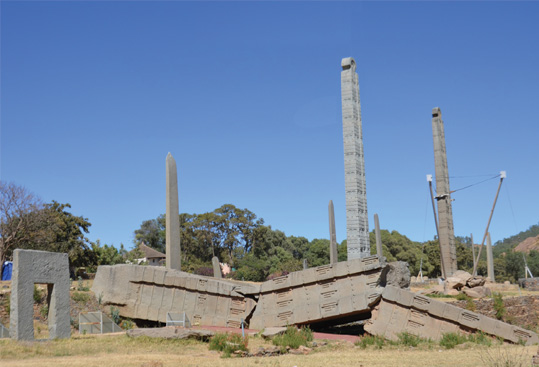
Axum (or Aksum) – northern Ethiopia
The Kingdom of Axum dominated the area between the eastern Roman Empire and ancient India and grew rich and powerful through its control of key trade routes. The city’s ruins – dating between the 1st and 13 century AD include the world’s largest monolithic obelisk known locally as stelae – some of which rise above 23 metres. The Ezana stone with the same message chiseled in 3 ancient languages has an historic and linguistic significance similar to the Rosetta Stone of Egypt. The Ark of the Covenant and the ruins of the palace of the Queen of Sheba are believed to be at Axum.
Fasil Ghebbi – a fortress city, Gondar
Fasil Ghebbi in Gondar city, also known as the Royal Enclosure is a fortress-city and, was the residence of the Ethiopian emperor Fasilidas and his successors. Fasilidas built the first fortified royal residence known as Fasilidas’ Castle inside a high perimeter wall with 12 gates. Gondar has several ancient sites including the extraordinary 'Fasil's Bath' and the beautiful murals of Debre Birhan Selassie church known for the angel faces painted on its ceiling. Fasil Ghebbi was also Ethiopia’s capital during the 17th to 19th centuries.
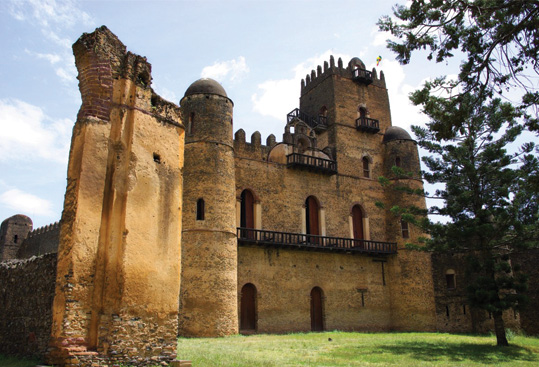
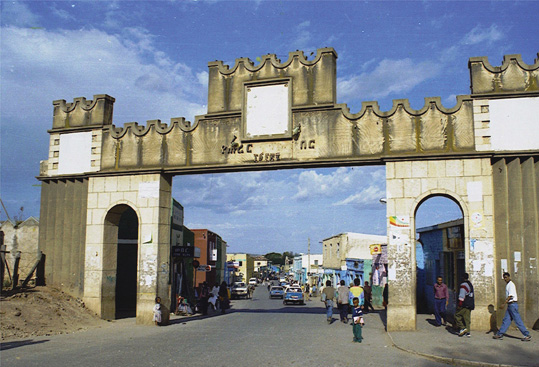
Harar Jugol -
This ancient walled city of labyrinthine alleyways is considered to be the fourth holiest city in Islam (after Mecca, Medina and Jerusalem). Located in the drier and hotter eastern lowlands, Harar is a recipient of a UN City of Peace medal and is known for the history of peaceful relations between Muslims, Christians and the five ethnic groups in the region. Harar grew to prominence as a centre of the coffee trade, its position on key trade routes and came to be known as The City of Saints for its status in Islamic culture in this east African region.
Awash River – The Birthplace of Humanity
The earliest known remains from the beginning of our species have been found in this region; considered the world's most early human ancestor, the 3.2-million-year-old ape "Lucy" was the first Australopithecus afarensis (extinct hominin) skeleton ever found though her remains are only about 40 percent complete.The Awash River drains rainfall from the highlands and runs through the homeland of the Afar people into the Afar/ Danakil Desert eventually evaporating in a series of lakes before it reaches the Red Sea coast.
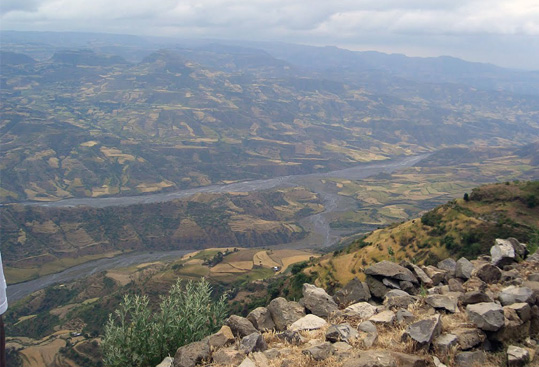
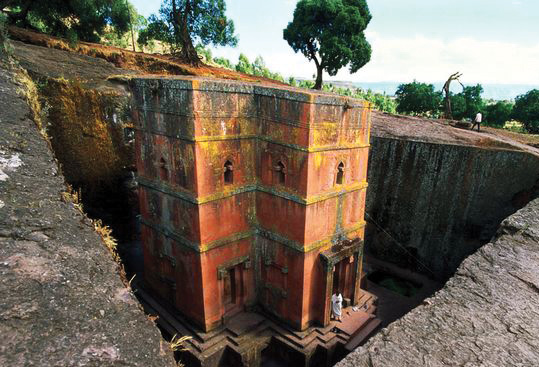
Rock-Hewn monolithic Churches of Lalibela
As one of Ethiopia’s holiest cities in the Orthodox Christian tradition and a centre for pilgrimage, Lalibela is known primarily for its 11 ancient medieval churches carved out of solid rock dating from the 12th century. The churches weren’t built with traditional methods but were rather hewn from solid rock, chiseled on the outside and elaborately carved out and decorated on the inside. These ancient buildings’ construction are attributed to King Lalibela as a safer pilgrimage destination as a ‘New Jerusalem’ after Muslim forces captured Jerusalem in 1187. Lalibela was also Ethiopia’s capital from late 12th century to the 13th century.
Tiya Stelae Field – Central Ethiopia
The ancient archaeological site of Tiya boasts over 36 monolithic monuments or columns, including 32 carved stelae with symbols chiseled in relief that signify the ancient culture of Ethiopia, the age of which has not yet been completely determined. The identity of the artists/ architects is unknown, but stone stools dated from 250,000 – 280,000 years ago have been found nearby. The stelae are considered to have been built between the 11th and 13th centuries CE.
Please note that a visit here is optional.
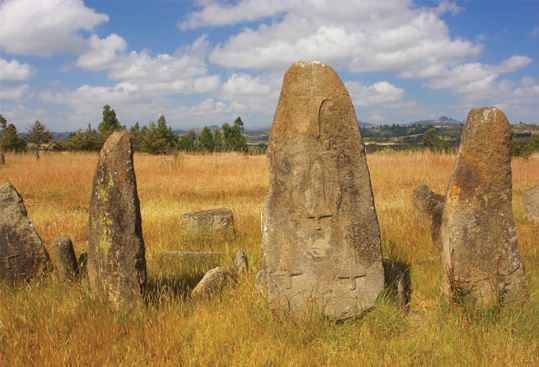
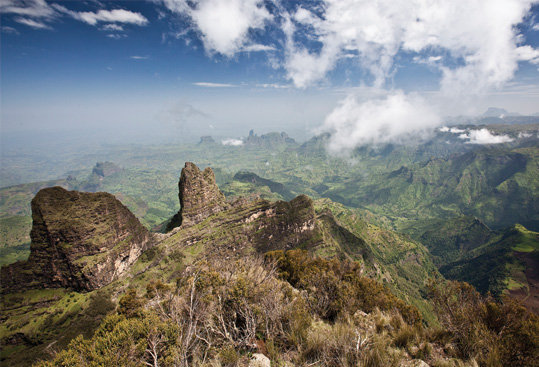
Simien Mountains National Park - the Roof of Africa
The Simien Mountains National Park is the heart of Africa's greatest mountainous area. The Simien Mountains were built by eroded volcanic cores from eruptions dated as 75 m years ago. The scenery is breathtaking with an array of rivers, forests and a rich cultural heritage. The Simien Mountains’ highest peak and Africa’s 10th highest, is Ras Dashen at 4,550 m. This region is home to some spectacular endemic mammal species – including the Gelada Baboon, the Walia Ibex, Caracal and the Simien Wolf. The mountains are also populated with large birds of prey such as the Lammergeier with its spectacular 3 m wingspan.
Konso Cultural Landscape – Ethiopia
This area is home to the local Konso people in the far south of Ethiopia. The Konso people use traditional terracing and irrigation techniques in this mountainous region. Wooden carvings called Waga sculptures honour the memory of respected ancestors. Fossils found in the area indicate the ancient presence of some of our earliest hominid ancestors.
See our new 7 day tour to the Lower Valley of the Omo River that includes a visit to Konso.
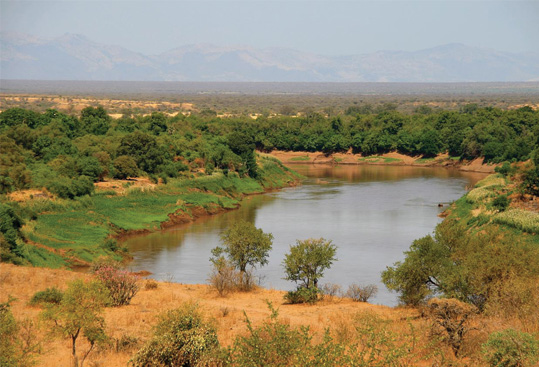
Lower Valley of the Omo River – Ethiopia
The Omo River is also in the far south of Ethiopia and drains south into Lake Turkana in Kenya. The entire area is important archaeologically and geologically with fossils and tools found at several locations from 2.4 m years ago. The great diversity of peoples and cultures in this region lead many scholars to think it was an ancient crossroads for migrating ethnic groups and cultures.
See our new 7 day tour to this fascinating region.

